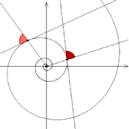Myth #1 Pilates is only for women
Pilates was developed by a man, Joseph Pilates, who is said to have been rather a ‘macho’ man. Joe was a boxer, gymnast, and a military trainer in his early ages and even in his eighties his physique was very strong and fit as one can see on older photographies.
Men have always played an important role in developing and maintaining the work on the Pilates method. As the very first Pilates Studio in New York was literally next door to the New York City Ballet, the Pilates method became very popular among dancers in its beginning. Many of them choose Pilates as a second or later career – especially for the female dancers it seemed to offer new opportunities once they stopped dancing professionally. So maybe the large number of female teachers attracted initially more women than men into the studios – fortunately this is changing in recent years – as Cristiano Ronaldo, Sylvester Stallone or David Beckham exercise with Pilates as well. There is nothing that makes it better designed for women than for men and there are certainly no gender-dependant benefits.
On the contrary, the adaptability of the Pilates method makes its suitable for different levels of fitness, for various body shapes and nearly all age groups.

Myth #2 Pilates is a derivative of yoga
There is no historical evidence that Joseph Pilates actually studied Yoga. We know that he was investigating very different fitness disciplines including body-mind-related types.
The focus on breathing and mindfulness in the six Pilates principles seems closely related to exercise forms such as Yoga. And some Pilates exercises are very similar to Yoga Asanas: for example, Elephant or Longstretch on the Reformer.
But nevertheless this myth lets Pilates as well as Yoga teachers grind their teeth as students might think that Pilates and Yoga are sort of interchangeable. And as they are definitely complimentary disciplines, they are also very different.

Myth #3 Pilates is just working on the core and stretching
Well, Pilates is definitely working on the core and it integrates a lot of stretching as well. But this is only part of the truth.
Focusing on the deeper muscles leads to strong, but flexible muscles, giving the body a wider range of motion, mobility and freedom, creating stability in a flexible body. This is one of the reasons why it is so successful for people who suffer from (back)pain. Pilates works all parts of the body in a very smooth way thereby balancing and aligning the whole body.
The six Pilates principles – breathing, centering, concentration, precision, control and flow – will lead to a consistent mind-body experience. Pilates is moving to heal.
